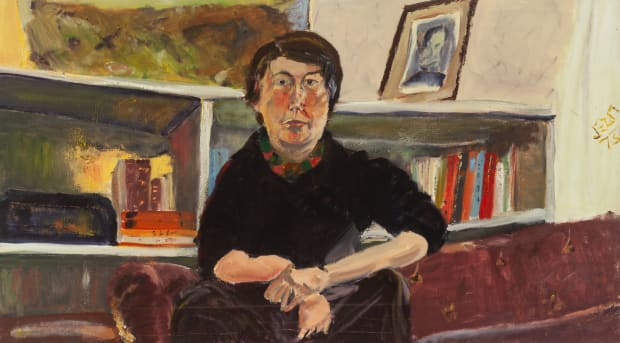Literary & Artistic Circle
Whilst studying in Cambridge, Jones developed close personal friendships with Iris Murdoch and William Golding, relationships that would last their lifetimes. Jones would go on to paint portraits of both and a number of letters, detailing their intimate correspondences, remain intact.
After leaving Cambridge, Jean married John Jones, a Fellow of Merton College, Oxford, and later the 38th Oxford Professor of Poetry (1978-83), and moved to Oxford with her new husband immediately, taking up residence in Holywell Cottage on St Cross Road. The marriage produced two children, Jeremy and Janet. In 1958 John purchased a cottage for the family in Yellands. Though Jean was yet to see it until the paperwork was signed and the transfer was complete, the cottage became an important space for her work; the site and subject of a number of her drawings and paintings.
Whilst in Oxford, Jean and John further enhanced their position within the prominent British literary, artistic, and academic circles of their time. Those in possession of Jones's work included J.R Tolkien, the poet John Heath Stubbs, the novelist and academic Rachel Trickett, the literary agent and publisher Hilary Rubinstein, the historian Harry Pitt, the American author and critic Diana Trilling, the Bishop John Oliver, and academics Andrew Wallace-Hadrill and J.M. Wallace-Hadrill.




